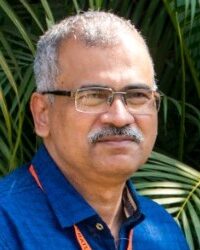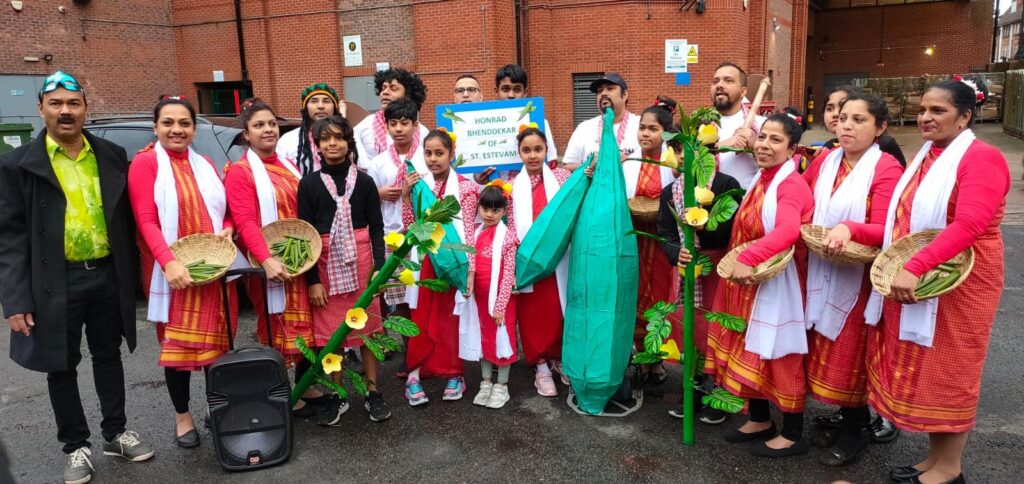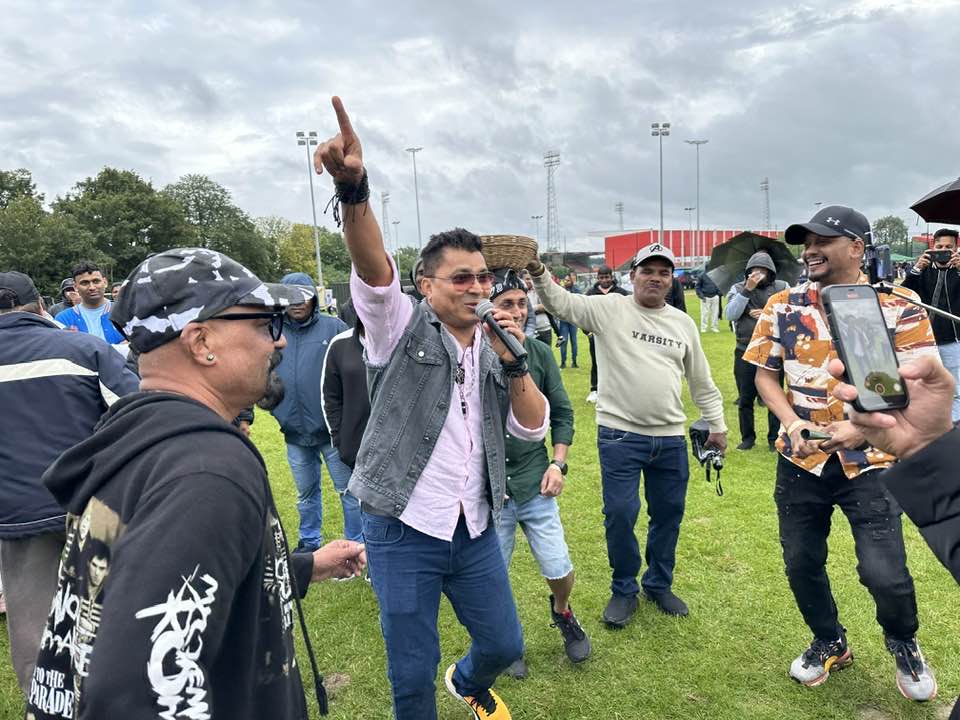 É a língua e o território que são as forças de ligação da identidade goesa, e os desafios na sua manutenção estão a crescer rapidamente, diz Alexandre Barbosa neste artigo, exclusivo para a Sociedade Lusófona de Goa e em língua inglesa. Nos últimos anos, houve inúmeras ocasiões em que o povo de Goa protestou contra as mudanças do território, e isso decorre do medo de que tais mudanças levem a uma perda da identidade goesa. Para Alexandre Barbosa Goa, no entanto, não é o único local afetado pela migração e pelas mudanças de território. Este é um fenómeno em todo o mundo. O que o torna relativamente gritante em Goa é a compacidade do lugar e a sua população relativamente pequena, conclui Alexandre Barbosa. Leia o artigo na íntegra em inglês.
É a língua e o território que são as forças de ligação da identidade goesa, e os desafios na sua manutenção estão a crescer rapidamente, diz Alexandre Barbosa neste artigo, exclusivo para a Sociedade Lusófona de Goa e em língua inglesa. Nos últimos anos, houve inúmeras ocasiões em que o povo de Goa protestou contra as mudanças do território, e isso decorre do medo de que tais mudanças levem a uma perda da identidade goesa. Para Alexandre Barbosa Goa, no entanto, não é o único local afetado pela migração e pelas mudanças de território. Este é um fenómeno em todo o mundo. O que o torna relativamente gritante em Goa é a compacidade do lugar e a sua população relativamente pequena, conclui Alexandre Barbosa. Leia o artigo na íntegra em inglês.
Challenges to the strengthening
of Goan Identity
by Alexandre Moniz Barbosa September 2, 2024
World Goa Day is a relatively new concept that has emerged and gained popularity in the last two decades. It commemorates the day that Konkani was included in the VIII Schedule of the Indian Constitution. While it is observed or celebrated on August 20, World Goa Day is also celebrated on any weekend close to that date and in some cases even earlier or later. The reason for this is mainly that World Goa Day is a concept that originated amongst the Goans settled abroad rather than those living in Goa and for them the weekend holiday in their country of residence enables them to meet as a community and celebrate.
It was the diaspora that first construed the concept of World Goa Day and even in current times, it is mainly the Goan abroad who celebrates this day, with merely a token function in Goa. In that respect, for the past couple of decades, and especially in more recent years, Goa Day has become that link the Goans abroad maintain with the land of their birth or that of their ancestors. It is neither a tenuous connection nor any robust association, but floats somewhere between these and is swimming fast to gain preeminent position among celebrations of Goans abroad. It has succeeded in bringing within its waters a larger number of Goan communities in Europe, North America and Australia who are beginning to plunge into celebrating the day. This has mainly been enabled by the connections forged on social media.

The celebrations at the World Goa Day are mainly made up of music, dance, cuisine and language. It figures, therefore, that it is these that bestow the Goans abroad their identity or bring to mind their roots in Goa. Even in Goa, whenever there have been debates on identity, these cultural aspects, language primarily, emerge first to define the Goan. In the absence of a clear definition to Goan identity, it is today a loose expression that identifies Goans in the land of their birth and also when they travel outside the State, but in both cases, this is changing. How is a Goan identified if not through the language of the land? How else is a Goan identified if not through the land of his birth? In a land where identity is a term that can have vast connotations, mainly due to history having effected changes in the pre-existing culture, it is the language and land that are the binding forces of Goan identity and the challenges in maintaining these are growing rapidly.
Goa has protected its language, by giving Konkani Official Language status. The language is in use in Devanagari and Romi scripts, with the proponents of the latter seeking recognition of their works as the Romi script is not recognised by the State. However, though Konkani has protection, the use of other languages, especially English, could severely affect its further development and the possibility of some day Konkani falling into the endangered languages category cannot be ruled out. One challenge towards maintaining Goan identity would be keeping the language alive, in use and developing it.
The other challenge is land. Goa’s restricted area makes it vulnerable to zoning changes. In recent years there have been numerous occasions when the people in Goa have protested the changes in land use, and this stems from the fear that such changes would lead to a loss of Goan identity. This fear is plausible for the changes in land zoning have led to gated residential complexes on land that was once a paddy field or a coconut grove. This has led to a rise in population in Goa, with migration into the State. It is emerging increasingly clear that migration – into Goa and out of Goa – has irreversibly changed the demographics of the State and contributing to the dilution of Goan identity as we know it and as we view it.

Migration is not a boogie being raised by certain quarters to show dilution of Goan identity. In 2013 the State government had, in a representation to the Union Government, sought special status for Goa and had stated in its written representation that, “Over a period of time, unrestricted migration into this tiny State is threatening to make the Goans a minority in their own State.” It had gone further to state, “The apprehension is that by 2021 the migrant population will outnumber the local Goans.”
In relation to this, World Goa Day makes us aware that there is a vibrant community of Goans settled outside Goa, which signifies that there has been substantial migration of Goans to other countries and it’s not just that Goans are being outnumbered by migration into the State. Goans going abroad for jobs has been a phenomenon for over a century. In the past they went to Portuguese Africa, East Africa and to work onboard ships. Later the Gulf states opened up and Goans went there too in much larger numbers. The difference is that those working on ships and in the Gulf returned to Goa at some point of time. That has changed now, and they are looking at settling in Europe, Canada and Australia. So as the number of Goans in Goa decreases, the number of settlers increases and this is going to be the biggest challenge in maintaining Goan identity.
Goa, however, is not the only such place affected by migration and land changes. This is a phenomenon across the world. What makes it relatively stark in Goa is the compactness of the place and its relatively small population. The State could learn from how other place are dealing with similar problems and devise means to safeguard its identity, strengthen it. If Goa is to survive, not just as the geographical entity that is exists as, but as an idea and as an expression of Goemkarponn (Goaness) then the emigration of Goans abroad has to be reduced and its land use has to be maintained as far as possible. It may not sound like much to ask for, but in practical terms, it would be very difficult to achieve.

Alexandre Moniz Barbosa
Alexandre Moniz Barbosa é jornalista/escritor/editor residente em Goa, na Índia. Foi editor executivo do jornal “O Heraldo” e editor residente do “The Times of India” e da revista “Goa Today”. Publicou vários livros e foi o vencedor do concurso bienal de contos goeses de 2013. O seu último livro, “Colonial Sunset”, tem como pano de fundo a libertação de Goa.




